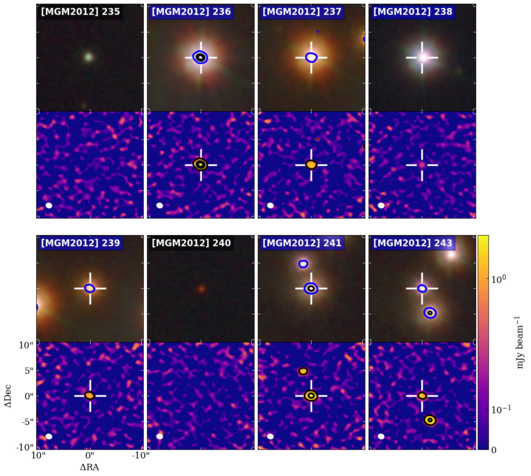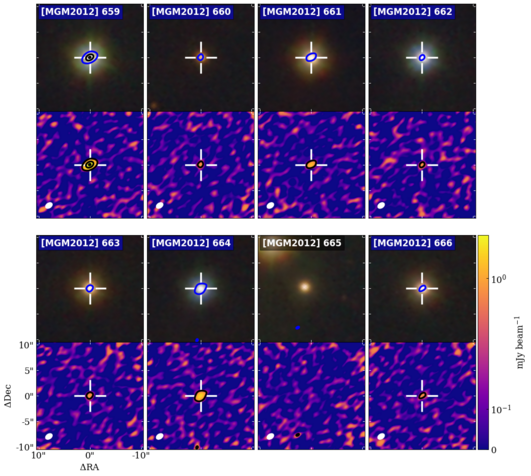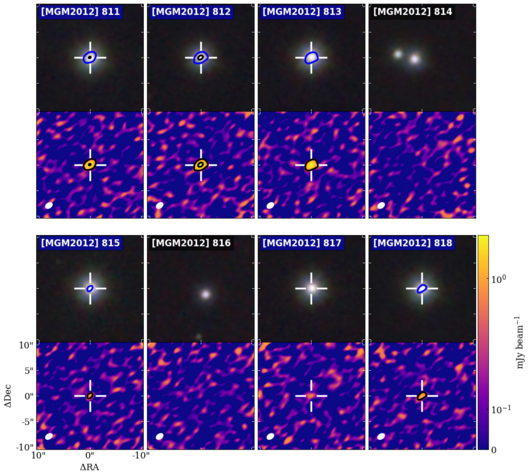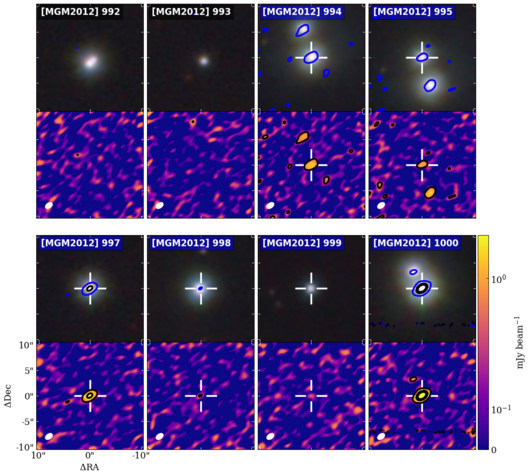Survey of Orion Disks with ALMA (SODA): cloud level demographics of 873 proto-planetary disks
SODA (PI: Sierk van Terwisga) is the largest single survey of protoplanetary disks at millimeter-wavelengths to date. We focus on the disks in L1641 and L1647, the southern part of Orion A, where no massive stars are present, but large numbers of young disk-bearing stars can still be found. By combining the extreme sensitivity of ALMA to the submillimeter emission from cold dust grains in the midplanes of protoplanetary disks with a high-throughput data reduction at SURF, we can gain a detailed insight into the mass distributions of protoplanetary disks.
The disk mass distribution is a tool to study how disks evolve in different environments. With SODA, we can not just characterize the bulk properties of the protoplanetary disks in the southern regions of Orion A, but also zoom in on how disk masses differ within the cloud, thanks to the large sample size. This is a unique opportunity not available in nearby star-forming regions. Our data reveal the disk demographics are surprisingly similar throughout the cloud, with variations of a factor few between different associations of young stars, like influenced by age gradients in the stellar populations.
Our first results and an overview of the sample selection and data reduction, as well as fluxes and masses for the full 873-disk sample can be found in: van Terwisga, Hacar, et al. 2022 [A&A].
All data products (FITS and PNG images) of this project are available online (see links below).
SODA is part of the scientific and technical ALMA developments of the EMERGE ERC-StG project (PI: Hacar). For more information, please go to our main page (link).

Mass distribution of the SODA disks in Orion in comparison with other surveys. Note how the large number of SODA targets (873 disks), the largest of its kind, allows a statistical characterization of the mass distribution with an unprecedented accuracy (van Terwisga, Hacar, et al 2022).
Irradiated disks
Using the large statistical sample in our SODA survey we derive the first observational (anti-)correlation between proto-planetary disk masses and external irradiation under soft UV fields. Our results indicate that UV radiation has a significant effect on disks well beyond the typical harsh environments found in clusters such as the ONC. These results were published our SODA paper II (van Terwisga & Hacar 2023).
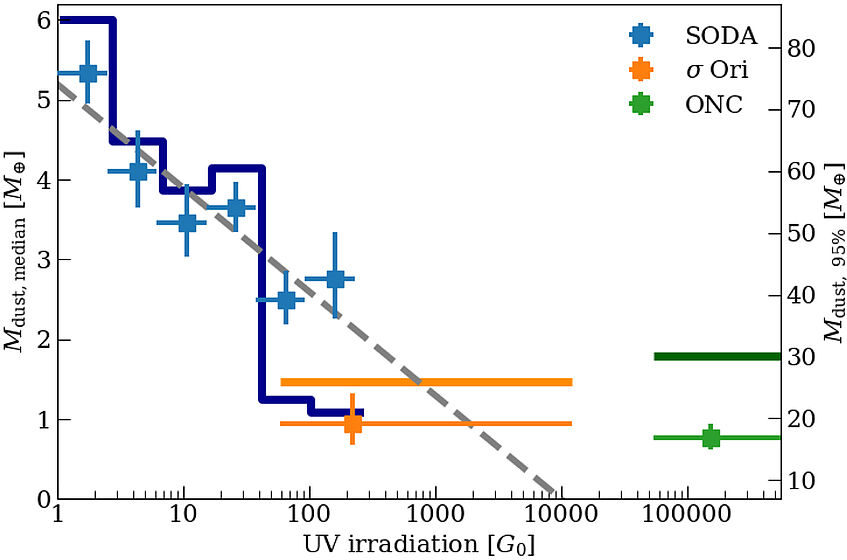
Disk masses binned by incident FUV flux (in units of G0) (see van Terwisga & Hacar 2023).
ALMA vs VISTA
Selection of SODA disks in Orion A including single sources, close and wide binaries, and non-detections. For each panel: (top) VISTA-IR composite image (VISION survey, Meingast et al 2016); (bottom) ALMA 225 GHz continuum emission. Source names correspond to the Mageath et al 2012 (MGM2012) catalog. In both panels the contours represent the 5, 50, and 100 sigma contours of the ALMA continuum. Visit the SODA section to obtain the corresponding PNG images for all the SODA disks.
Data Products
All .fits data products and PNG images of the ALMA and VISTA data can be found here.
The .fits data products are 2000x2000 pixel continuum maps at 225GHz, with 0.02'' x 0.02'' pixel sizes, in intensity (Jy/beam) units. Please keep in mind that the beam shape varies quasi-smoothly over the imaged fields, due to the significant range in declination spanned by the targets. The images have been corrected for primary beam coverage. The data as presented here are not self-calibrated. Please see van Terwisga, Hacar, et al. (2022) for sources where extended emission is present.
FITS files (Dataverse): https://dataverse.harvard.edu/dataset.xhtml?persistentId=doi:10.7910/DVN/BKWJAI
Individual PNG images (ALMA+VISTA): https://drive.google.com/drive/folders/14BMHPrcEK2NmdqCG7VWr4bMSa6BvfQW3?usp=sharing
All PNG images (TAR file): https://drive.google.com/file/d/1nMRZNfkdHDhKxMyh66_e9SFiiL256J7H/view?usp=sharing

